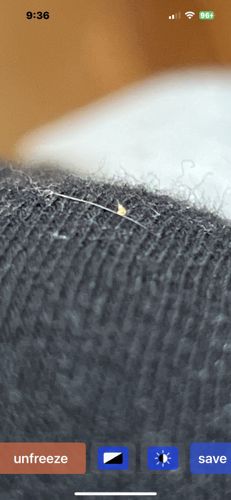Louse Egg (Nit)
Scientific Name: Pediculus humanus capitis (for head lice)
Order & Family: Phthiraptera (Order), Pediculidae (Family)
Size: Approximately 0.8 mm to 1.0 mm in length

Natural Habitat
Attached to hair shafts, typically on the scalp of humans, but can be found on clothing or bedding temporarily after detachment.
Diet & Feeding
Nits themselves do not feed. They are the eggs of head lice, which feed on human blood.
Behavior Patterns
Nits are laid by female lice and are cemented firmly to individual hair shafts, usually close to the scalp where warmth helps them incubate. They hatch into nymphs within 7-10 days, subsequently developing into adult lice. Nits are notoriously difficult to remove due to the strong adhesive secreted by the female louse.
Risks & Benefits
Risks: Nits indicate a head lice infestation (pediculosis capitis). While not directly harmful, head lice cause intense itching, skin irritation, and can lead to secondary bacterial infections from scratching. They do not transmit diseases. Benefits: None for humans; they are generally considered a nuisance parasite.
Identified on: 10/7/2025